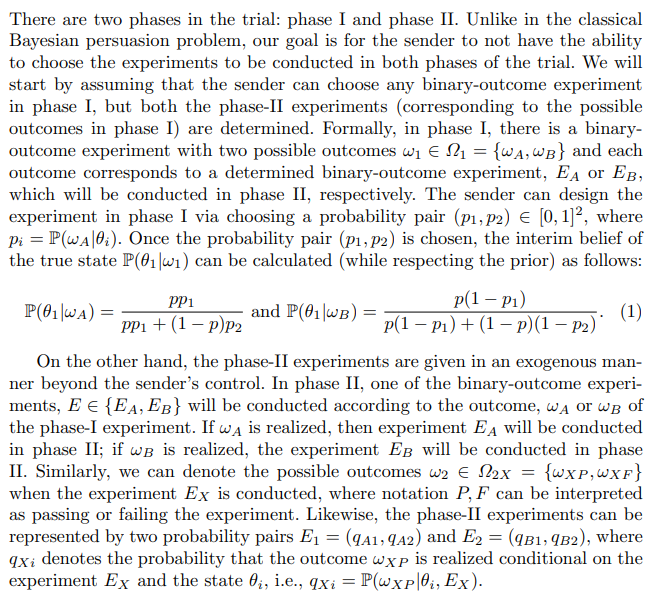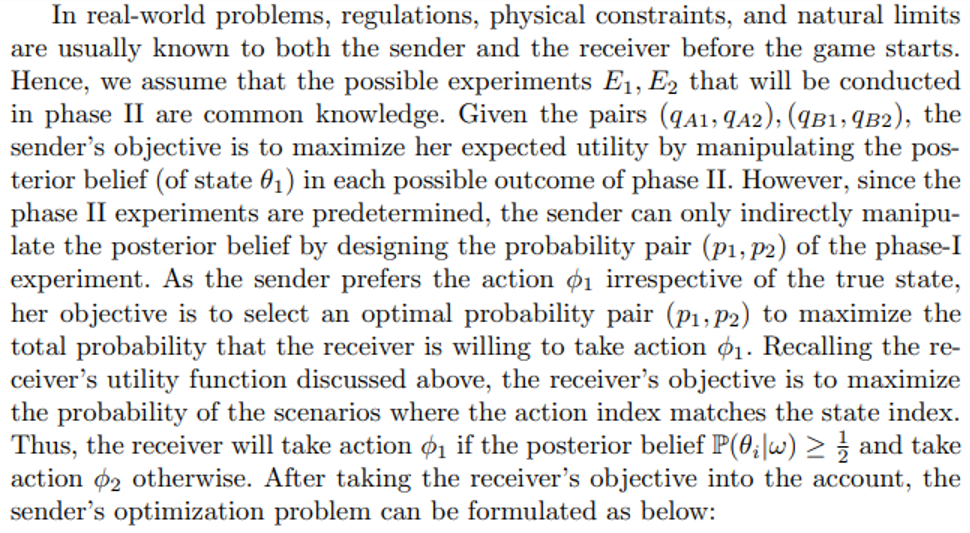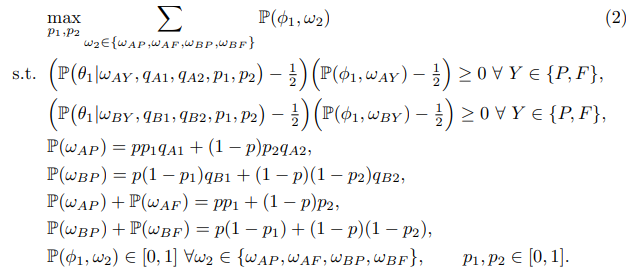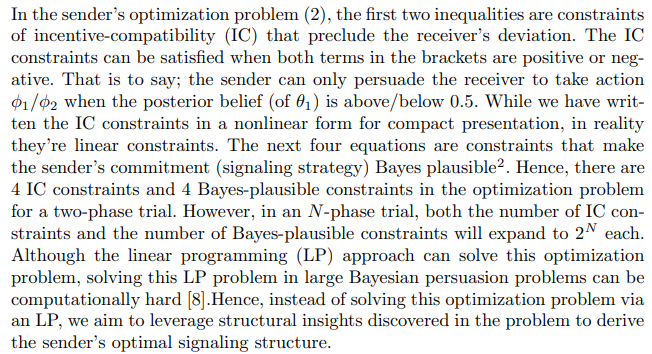Authors:
(1) Shih-Tang Su, University of Michigan, Ann Arbor ([email protected]);
(2) Vijay G. Subramanian, University of Michigan, Ann Arbor and ([email protected]);
(3) Grant Schoenebeck, University of Michigan, Ann Arbor ([email protected]).
Table of Links
2.1 Model of Binary-Outcome Experiments in Two-Phase Trials
3 Binary-outcome Experiments in Two-phase Trials and 3.1 Experiments with screenings
3.2 Assumptions and induced strategies
3.3 Constraints given by phase-II experiments
3.4 Persuasion ratio and the optimal signaling structure
3.5 Comparison with classical Bayesian persuasion strategies
4.2 Determined versus sender-designed experiments
4.3 Multi-phase model and classical Bayesian persuasion and References
2.1 Model of Binary-Outcome Experiments in Two-Phase Trials




We end this section by emphasizing that this model is the only non-trivial two-phase trial configuration when determined and designed experiments coexist. In other configurations such that some of the phase-II experiments can be designed by sender, the model can be reduced to a corresponding single-phase trial in the sense that the single-phase trial will yield the same payoffs for both sender and receiver when they play optimally. (Note that the reduced model may have a different prior if the experiment in phase-I is determined).
This paper is available on arxiv under CC 4.0 license.


